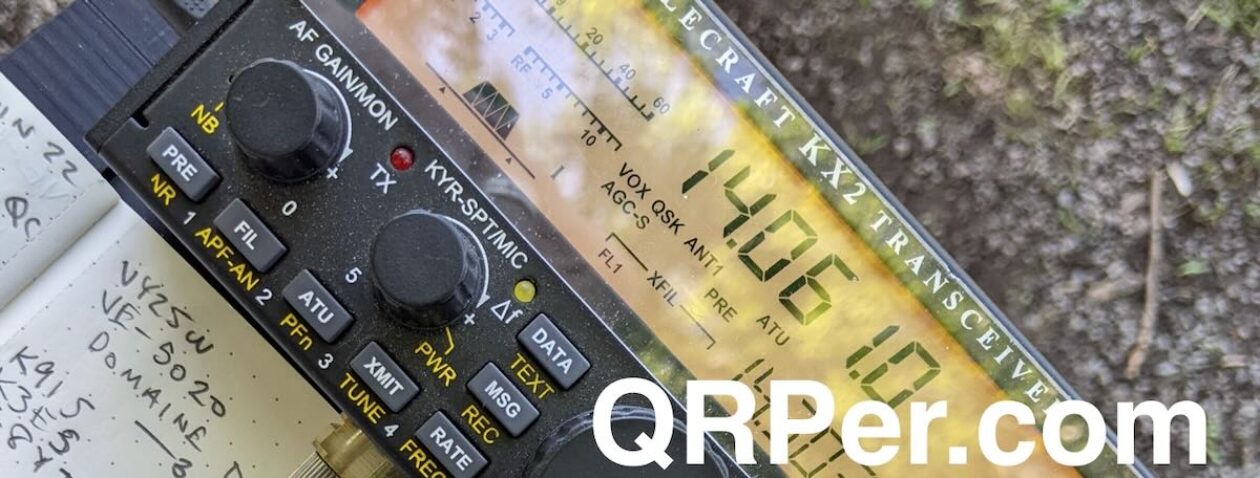The 2024 Dayton Hamvention is in the books!
This morning, I’m still at our hotel in Dayton, Ohio, but about to pack up and head out. Eric (WD8RIF), Miles (KD8KNC), and I are heading for a day at the Armstrong Aerospace Museum, then, hopefully, a POTA activation on the way back to Athens, Ohio, where I’ll spend the night.
Tuesday morning, I’ll be up early and hit the road for North Carolina. Really looking forward to seeing my wife, daughters, and Hazel.
I thought I’d share a very brief POTA activation I enjoyed yesterday with friends.
Pater State Wildlife Area (US-9492)
 Yesterday morning (May 19, 2024), Eric, Miles and I met up with Kyle (AA0Z), Brian (K3ES), Joshua (N5FY), and Charlie (NJ7V) at our hotel.
Yesterday morning (May 19, 2024), Eric, Miles and I met up with Kyle (AA0Z), Brian (K3ES), Joshua (N5FY), and Charlie (NJ7V) at our hotel.
Eric, Miles, Brian, and I had planned to activate a park in nearby Indiana that afternoon, as Brian and I had never activated in that state. Joshua, Charlie, and Kyle were planning to join us on an activation in southwest Ohio en route. Unfortunately, Joshua was driving back to his home in Georgia, and Kyle was dropping off Charlie at the airport on his way home, so they couldn’t join us in Indiana.

We arrived on-site a little after 10:00 AM local. Eric immediately set up his Elecraft KH1 in desktop mode using his new Tufteln KH1 Right-Angle adapter.
 Brian set up under a tree with his Elecraft KX2 and a Tufteln random wire antenna.
Brian set up under a tree with his Elecraft KX2 and a Tufteln random wire antenna.

I grabbed my Elecraft KH1 and we coordinated frequencies. Brian took 30 meters, Eric took 40 meters, and I took 17 meters (thinking either Joshua or Eric might move to 20 meters).

This was another instance where having a fully handheld, pedestrian mobile station truly offered a level of activation freedom.
 The bands were in rough shape, but I kept my KH1 in hand and walked around the entire site with the CW Message memory sending out my “CQ POTA DE K4SWL.”
The bands were in rough shape, but I kept my KH1 in hand and walked around the entire site with the CW Message memory sending out my “CQ POTA DE K4SWL.”
 Over the course of 13 minutes, I worked five stations. All the while, I was holding the KH1, chatting with my friends, and petting a sweet local dog that instantly made friends with us.
Over the course of 13 minutes, I worked five stations. All the while, I was holding the KH1, chatting with my friends, and petting a sweet local dog that instantly made friends with us.
This pup was a hoot!
This activation also gave me an excuse to try out the new Tufteln KH1 Antenna Angle Adapter which makes it a breeze to keep the antenna nearly vertical while holding the KH1 at a more comfortable angle. Thanks, Joshua!
Eventually, I moved to 20 meters and we all started working each other to help with our QSO count and to simply get each other in the logs. I logged two more stations, plus Charlie, Brian, and Joshua to make my 10.

The idea was to hop off the air quickly so that Kyle and Charlie could use Kyle’s KX3 station to activate the park as well.

Conditions deteriorated further, so we did rely on a few P2Ps with each other to help Charlie and Kyle finish and hit the road.

Here’s my QSO Map, but keep in mind that several of the pins are incorrect as Charlie, Kyle, Brian, and Joshua were all on-site:
 All in all, we had an amazing time and it was a nice, relaxed way to wind down after an incredibly active 2024 Hamvention and FDIM conference.
All in all, we had an amazing time and it was a nice, relaxed way to wind down after an incredibly active 2024 Hamvention and FDIM conference.

I will report more on Hamvention and share a few photos later this week.
For now, I need to wrap up this post and hit the road! There’s an aviation museum and POTA in my future today!
Heartfelt Thank You
I will add this one extra note: I’m simply overwhelmed with the kind comments and conversations I had with so many of you who took the time to catch up with me these past few days. Thank you so much!
Cheers & 72,
Thomas (K4SWL)













































































































